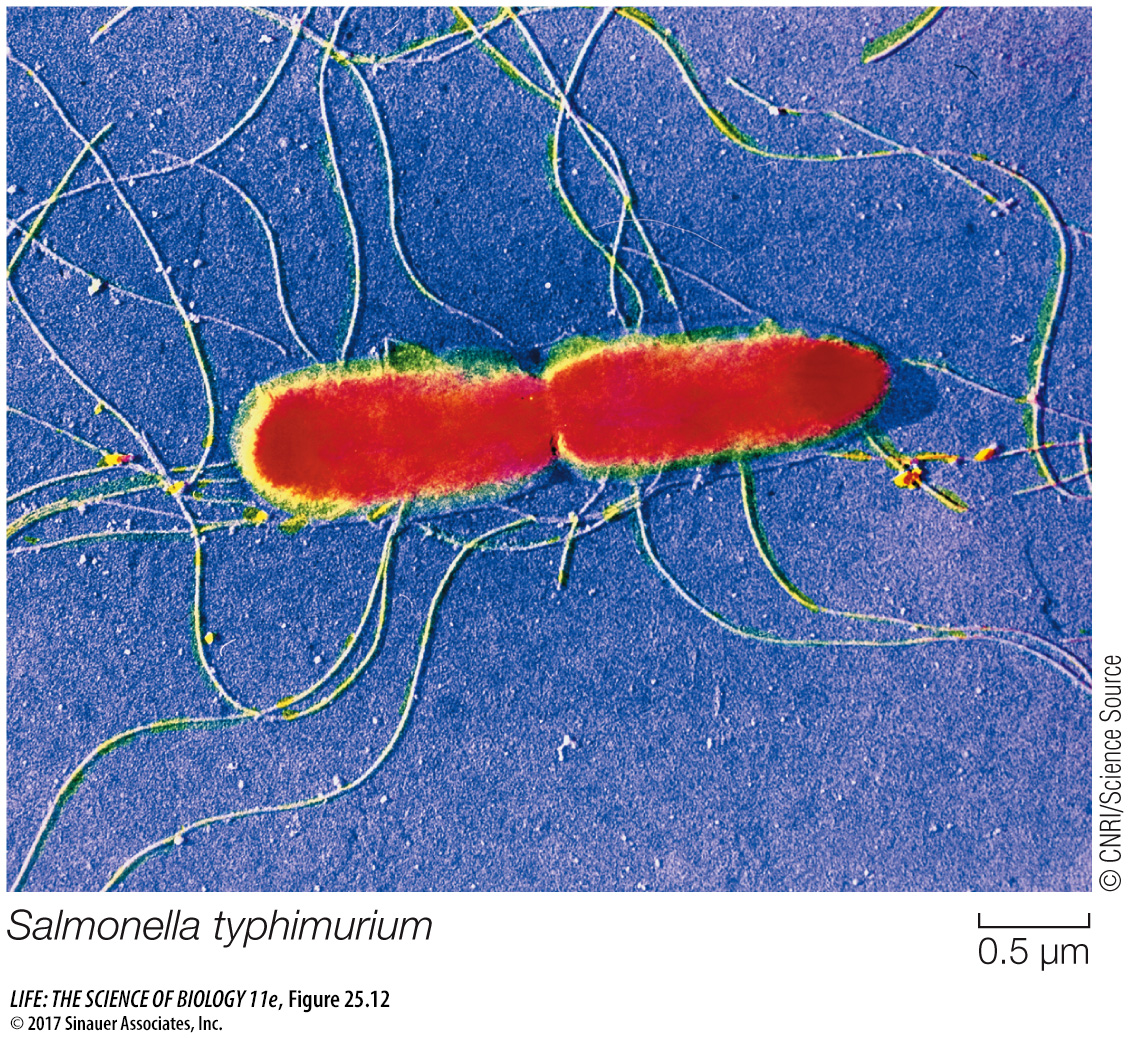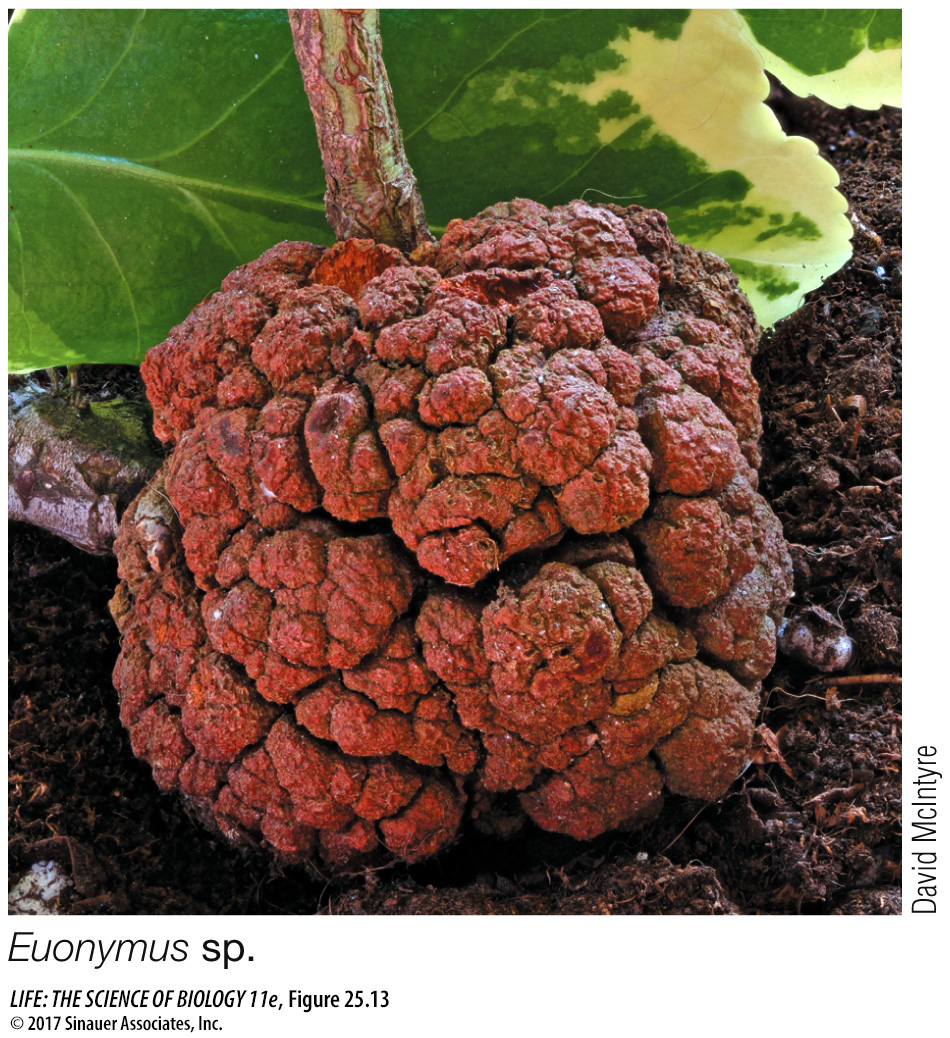The proteobacteria are a large and diverse group
By far the largest bacterial group, in terms of numbers of described species, is the proteobacteria. The proteobacteria include many species of Gram-negative photoautotrophs (see Key Concept 25.3) that use light-driven reactions to metabolize sulfur, as well as dramatically diverse bacteria that bear no phenotypic resemblance to the photoautotrophic species. Genetic and morphological evidence indicates that the mitochondria of eukaryotes were derived from a proteobacterium by endosymbiosis.
Among the proteobacteria are some nitrogen-fixing genera, such as Rhizobium, and other bacteria that contribute to the global nitrogen and sulfur cycles. Escherichia coli, one of the most studied organisms on Earth, is a proteobacterium. So, too, are many of the most famous human pathogens, such as Yersinia pestis (which causes bubonic plague), Vibrio cholerae (cholera), and Salmonella typhimurium (gastrointestinal disease; Figure 25.12).

Figure 25.12 Proteobacteria Include Many Familiar Bacteria These conjugating cells of Salmonella typhimurium are exchanging genetic material. This pathogen causes a wide range of gastrointestinal illnesses in humans.
Media Clip 25.2 A Swarm of Salmonella
The bioluminescent Vibrio we discussed at the opening of this chapter are also members of this group. There are many potential applications of the genes that encode bioluminescent proteins in bacteria. Already, these genes are being inserted into the genomes of other species in which the resulting bioluminescence is used as a marker of gene expression. Futuristic proposals for making use of bioluminescence in bioengineered organisms include crop plants that glow when they become water-stressed and need to be irrigated, and glowing trees that could light highways at night in place of electric lights.
Although fungi cause most plant diseases, and viruses cause others, about 200 known plant diseases are of bacterial origin. Crown gall, with its characteristic tumors (Figure 25.13), is one of the most striking. The causal agent of crown gall is Agrobacterium tumefaciens, a proteobacterium that harbors a plasmid used in recombinant DNA studies as a vehicle for inserting genes into new plant hosts.

Figure 25.13 Crown Gall Crown gall, a type of tumor shown here growing on the stem of a Euonymus shrub, is caused by the proteo-bacterium Agrobacterium tumefaciens.

